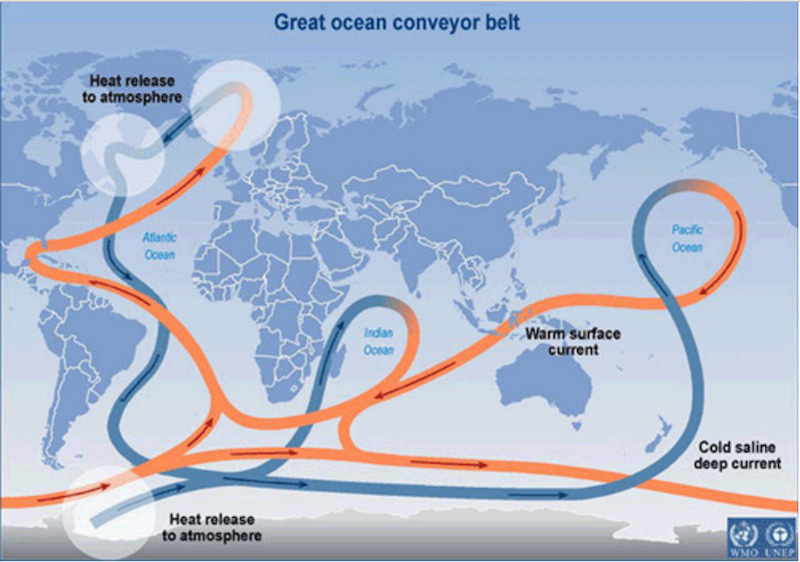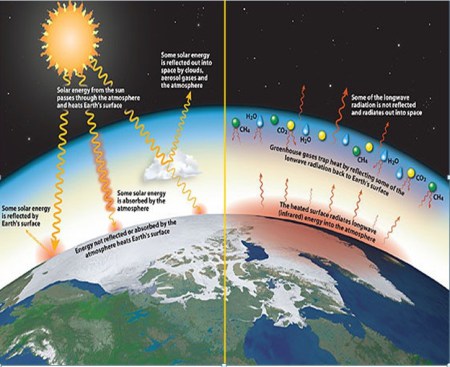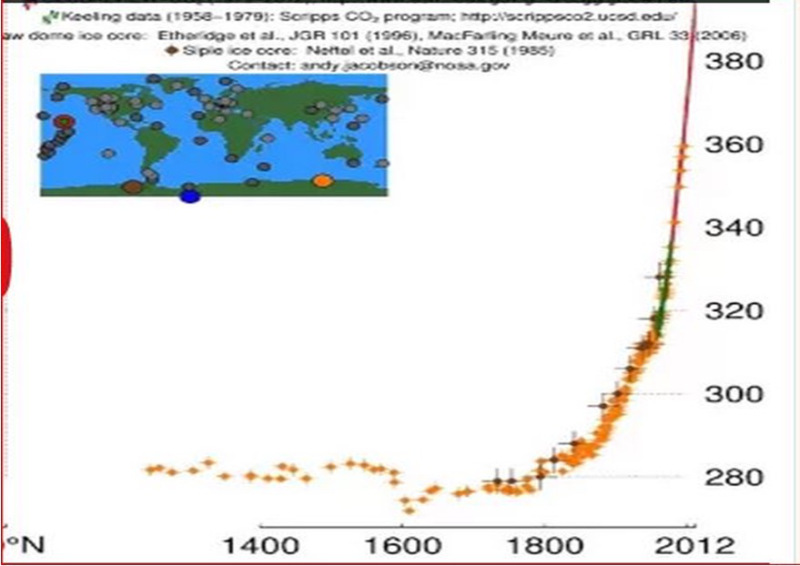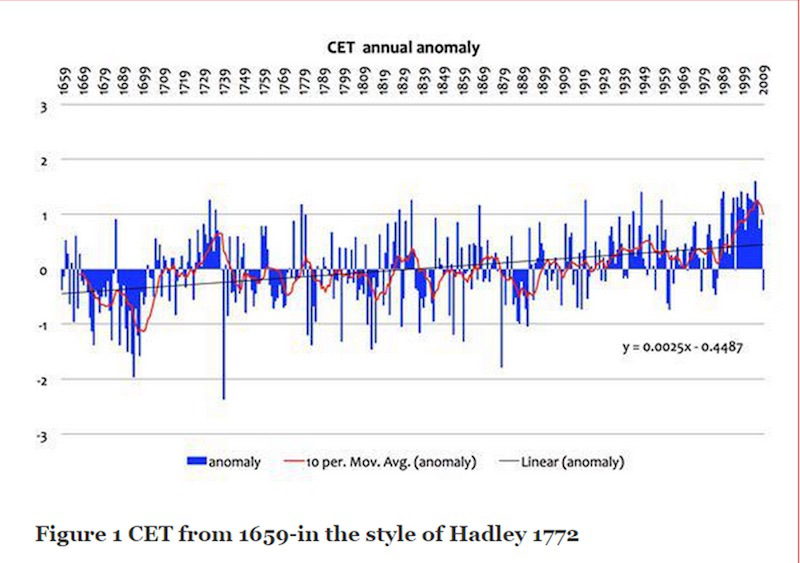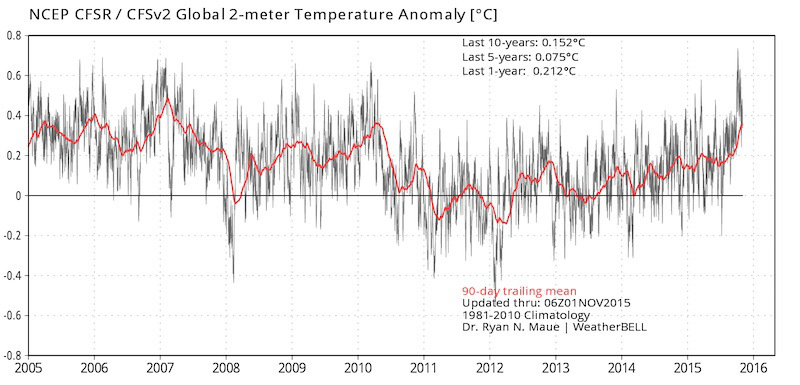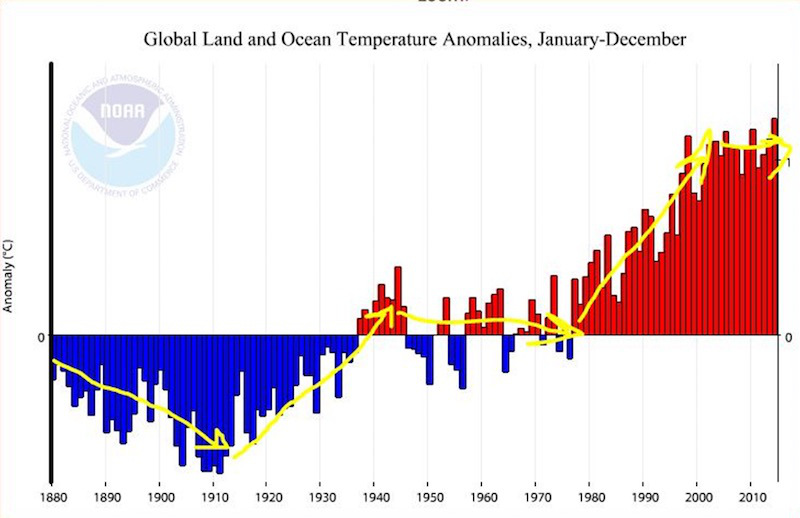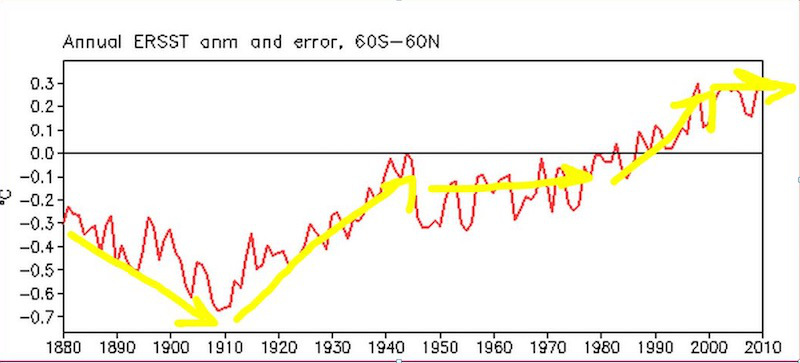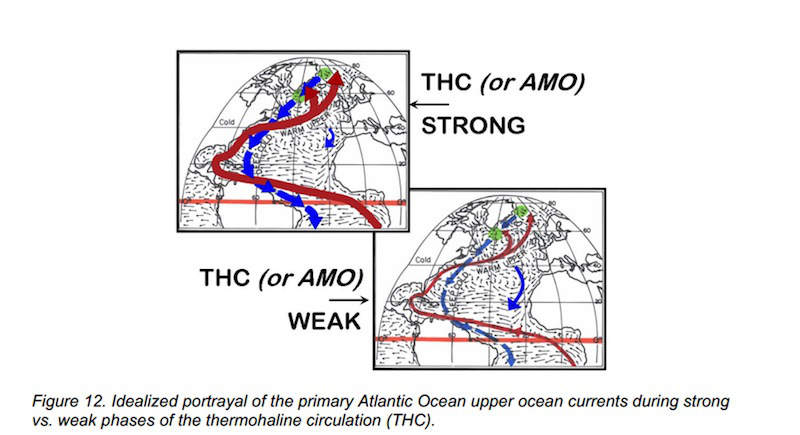Article courtesy: gcaptain.com | by
Above: Global Conveyor Belt Ocean Currents | Courtesy: gcaptain.com
There has been much press and controversy in recent years about global warming or climate change. Opinions range from doomsday scenarios to absolute disbelief. As a meteorologist (not climatologist), I say that the truth is somewhere in between these extremes.
Although climatologists and meteorologists debate the merits of global climate change theory, there are some facts that are not disputed by scientists. The vast majority of scientists agree that the global surface temperatures have increased since the mid-1800s and that humans are adding CO2 to the atmosphere. They also agree that CO2 and other greenhouse gases have a warming effect on the planet. There is disagreement, however, on whether the warming since 1950 has been primarily caused by human activities and just how much the planet will warm during the 21st century. They also tend to argue whether the warming is dangerous and whether or not anything can or should be done to prevent this.
Just what are greenhouse gases anyway?
Greenhouse gasses are those gases that allow the atmosphere to retain heat and thus warm the earth’s surface above what it would be from sunlight alone. The most significant greenhouse gas is water vapor followed by CO2, methane, nitrous oxide and ozone. Sunlight heats the earth’s surface and that heat is then partially absorbed by greenhouse gases. Without these greenhouse gases the earth’s temperature would be about 33°C (59ºF) colder than it is now, and our world would likely be a giant snow ball.
Above: Atmospheric CO2 levels over time.
The issue today is that some of these greenhouse gases, particularly carbon dioxide and methane have been increasing steadily since the beginning of the industrial revolution. Over the past approximately 150 years the level of carbon dioxide, for example, has undergone a very significant increase of about 40 percent, which cannot be accounted for by natural sources alone. Carbon dioxide is a powerful greenhouse gas, however, it is present in our atmosphere in very small quantities, about 400 parts per million or 0.04%. CO2 contributes between 9% (3C) to as much as 26% (8.6C) or the total 33C greenhouse effect. Given that atmospheric CO2 has increased about 40% over the past 150 years then you might well expect some significant warming. Just how much warming is what is in dispute and the best estimates I can find is that doubling CO2 would result in a warming of 0.7C to 1.2C alone or about 0.3C to 0.5C at the current 40% increase level. Add in various feedbacks and you might double that number.
Natural Variability
The oldest instrumental temperature record comes from Central England and goes back to the 1600s. In that record there is a sharp warming from 1690 to 1740 and another from 1820 to 1840. Although we can’t infer too much from this about global temperature variations, the Central England temperature record does illustrate the magnitude of natural climate variability.
Above: Source: Judith Curry Climate Etc. Blog http://judithcurry.com/2011/12/01/the-long-slow-thaw/
Solar activity also varies over time which affects global temperatures. From about 1750-1950 total solar irradiation has been estimated to have increased by about 1 to 1.5 Watts per square meter which can account for 0.2C to 0.3C warming during that 200 year period. More recently, total solar irradiation has begun to slowly decrease.
Current Pause
Above: Past 10 years NCEP CFSv2 2 Meter Temperature Anomaly C Source: weatherbell.com
Since 1998 there appears to be a pause in global warming not explained by the global climate models as they all predicted a 0.2C per decade warming. Are the models too sensitive to CO2 or is the treatment of natural variability not modeled well? Some papers suggest that the pause is not really there, however, the satellite data and the NCEP 2 meter temperature data strongly suggest that it is.
IPCC Report
In the most recent (2013) IPCC report it states that “Warming of the climate system is unequivocal, and since the 1950s, many of the observed changes are unprecedented over decades to millennia. The atmosphere and ocean have warmed, the amounts of snow and ice have diminished, sea level has risen, and the concentrations of greenhouse gases have increased“.
Above: NOAA Global Land and Sea Temperatures
If this is true, we might then ask what caused the strong warming noted from about 1910 to about 1945? This warming seems very similar to the more recent run-up from the late 1970s to 1998 but occurring prior to the 1950s. In the chart below, you will note that the global temperatures were falling from before 1880 until 1910 and then there were two periods when temperatures were nearly steady or fell slightly. The first pause occurred from the mid-1940s until the late 1970s then starting again from about 1998 until today. The most recent IPCC report, in my opinion, does NOT have a convincing explanation for the large warming between 1910 and 1945, the cooling between 1945 and 1975, and the flat temperatures in the 21st century.
Above: NOAA Reanalysis of SST Anomalies
This suggests to me that there is more in play here than just CO2, since the earlier warming occurred prior to when the majority of CO2 was emitted. Another theory offered by Dr. William Gray suggests that the ocean has multi-decadal and multi-century cycles that may have a significant influence on global warming. Below you see a similar trend with the ocean temperatures.
The role of the Oceans
The total heat content of the oceans is enormous when compared to the atmosphere. The atmosphere contains only about 2% of earth’s heat, the land masses another 2% and the oceans, about 93% with the remainder locked up in ice. Given the above, one must ask just what role the oceans play in global warming?
The ocean-atmospheric interactions are not fully understood and given that the vast majority of earth’s heat is stored in the oceans it is vital to any predictions regarding global warming to understand those interactions. One of the key questions is how much mixing of cold deep ocean water with warmer surface water varies over time and how does that effect the global temperature.
One key ocean cycle that is well documented is the Pacific Decadal Osculation (PDO). The PDO is a warming and cooling of the Pacific Ocean over a time period of 2-3 decades. If you plot the PDO index (see above) you will see that the two periods of strong warming (1910 – 1945) and (1978 – 1998) corresponds well with the positive (warm) PDO while the two periods of no global warming or some cooling corresponds well with the periods of negative PDO.
The theory that global warming is driven by ocean cycles seems to have some validity. Increasing atmospheric CO2 does have a role here, however, the longer-term ocean cycles may have an equal or possibly stronger effect. Besides the multi-decadal ocean cycles like the PDO, it is theorized that the Thermohaline Circulation (the global ocean current conveyor belt) runs in cycles that can extend out 100 years or more. As this circulation increases you get more mixing and thus colder sea surface temperatures and when if slows down you get less mixing and therefore warmer sea surface temperatures.
Source: The Physical Flaws of the Global Warming Theory and Deep Ocean Circulation Changes as the Primary Climate Driver – Dr. William Gray
The spike in global temperature for 2014-2015 reflects, in part, a brief return to the positive PDO in late 2013 and as we return to a negative PDO in the coming years the current pause in warming will continue. By 2020 we may have a better idea on how much ocean cycles play in atmospheric warming.
Fred Pickhardt
Ocean Weather Services

